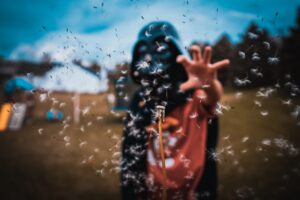
I have been thinking about the dark side of creativity a lot lately.
The public face of creativity is usually one of beautiful paintings, meaningful poetry or innovative products. It all seems very good, this creativity lark, however the dark side is known but poorly represented. Many people will think of the madness of Van Gogh leading him to suicide or the dark, powerful works of Sylvia Plath, who also ended her own life. And of course, now we add the wonderful Robin Williams to this list.
However research into the connection between mental illness and creativity is variable and you really have to read between the lines. One of the most recent large scale (1.2 million people!), long term studies (40 years) found that those in scientific or artistic jobs were not more likely to suffer from psychiatric disorders – the exception being bi-polar disorder which did show a small effect (Kyaga 2012). But large scale studies don’t always paint a useful picture. They don’t allow for the examination of the context and environment in which the person lives and they don’t often study the preventative factors which some people develop to protect against mental illness (Carson). They also don’t study the “milder” cases – the day to day things “normal” people both struggle and flourish with.
One of the key features of a creative mind, or perhaps one of the mechanisms by which “creativity” happens is the ideas or notions that are formed from loose associations/connections in the brain. I often describe it as the “wispy threads that tie random things together”. These things may be old memories, knowledge and ideas or new sensory input from the environment -sounds, movements, visual objects, written words etc.
These loose associations form at all sorts of times of day and during all sorts of activities, but are often synonymous with daydreaming, taking a lone walk or washing your hair. Sometimes it happens while we are being playful, having fun or relaxing. It’s as if our brain needs to literally loosen up and let go of its usual focussed, purposeful thinking, to allow space for new pathways, or “wispy threads” to form.
I have certainly felt this, whilst being employed in highly focussed, outcome driven jobs, where my mind has little room to breathe or loosen up sufficiently to allow for original thought. I have also noticed this in recent years, when I needed to stop “creating” in my business and start firming up the business and sell things! In a fascinating article about Brian Wilson (famous musician and songwriter from the Beach Boys), Brian Levine describes the similarities between this “loosening of linkages” that occurs during creative production and that which occurs during psychosis:
“certain individuals who are endowed with artistic vision and particular technical skills can, at times, transform the loosening of linkages into inspired artistic associations. These novel associations can be difficult for the individual to harness, however, because a person with psychosis is betrayed by his own disordered perceptions.” (Levine 2014)
Beautifully put.
Next time we will examine the role of the Executive system, why some people develop “protective mechanisms” against mental illness and why some don’t.
References
Kyaga et al (2012) Mental illness, suicide and creativity: 40 year prospective total population study Journal of Psychiatric Research 1-8
Carson S (2011) Creativity and psychopathology: a shared vulnerability model Harvard University Canadian Journal of Psychiatry. Revue Canadienne de Psychiatrie 56(3):144-153
Levine B (2014) Brian Wilson: A Cork on the Ocean “The rise and fall of the Beach Boys leader shows how crucial the brain’s executive function is to creativity” Scientific American Jan 2014 SE







1 Comment
So is this where we as OT s become unstuck? We’re so fixated on meaningful activity that we’ve ironed out the creases where creativity flourishes? I’ve had an artistic block for years now. I wonder if this explains why. Thank you.